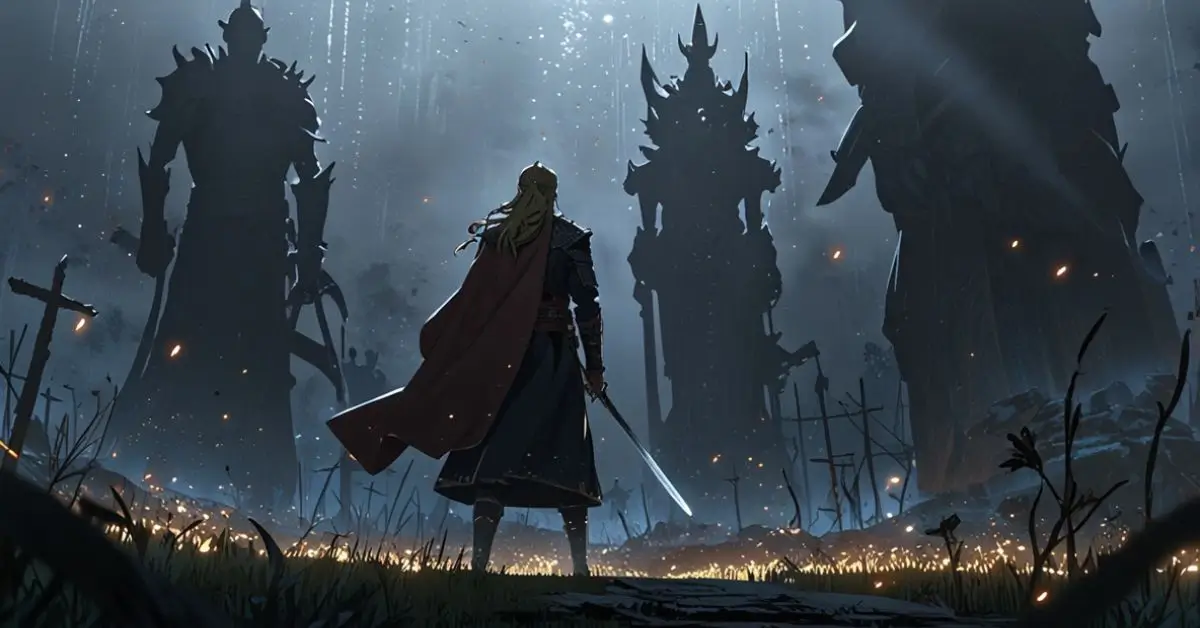In the vast realm of fantasy literature, “Regressing as the Bastard of the Sword Clan” stands out as a compelling narrative that intertwines themes of redemption, power, and destiny. This tale follows Theo Ragnar, an illegitimate son of the prestigious Ragnar Clan, as he navigates a world filled with betrayal, ambition, and the relentless pursuit of strength. Through regression, Theo is granted a second chance to rewrite his fate and claim his rightful place within the clan.
The World of the Ragnar Clan
The Ragnar Clan, known as the Lords of the Winter Mountains and the Dragon Knights, boasts a rich history spanning a thousand years. Their legacy is built upon strength, honor, and an unyielding code of conduct. However, beneath this noble facade lies a web of political intrigue and familial discord. Theo, born out of wedlock, is marginalized and scorned, labeled as the “bastard” unworthy of the clan’s esteemed lineage.
Theo Ragnar: The Protagonist’s Journey
Theo’s initial life is marred by hardship and betrayal. Despite his relentless training and unwavering determination, he is sabotaged by his mentor, Rendon Harvey, and ultimately meets a tragic end. However, fate grants him a second chance through regression. Armed with knowledge from his past life and a burning desire for justice, Theo embarks on a journey to reclaim his honor and reshape his destiny.
Themes Explored
Redemption and Second Chances
At its core, the narrative delves into the concept of redemption. Theo’s regression symbolizes the universal desire to rectify past mistakes and alter one’s destiny.
Power and Identity
Theo’s struggle is not just against external adversaries but also an internal battle to define his identity beyond the label of “bastard.” His journey underscores the idea that true power stems from self-belief and resilience.
Familial Bonds and Betrayal
The story intricately portrays the complexities of familial relationships, highlighting how ambition and jealousy can fracture even the strongest of bonds.
Comparative Analysis
To better understand the unique elements of “Regressing as the Bastard of the Sword Clan,” let’s compare it with other notable regression-themed narratives:
| Aspect | Regressing as the Bastard of the Sword Clan | The Reincarnated Assassin is a Genius Swordsman | Everyone Else is a Returnee |
|---|---|---|---|
| Protagonist’s Background | Illegitimate son of a noble clan | Assassin reincarnated into a noble family | Left behind during a rapture |
| Central Theme | Redemption and reclaiming honor | Mastery of swordsmanship and magic | Survival and self-improvement |
| Antagonistic Forces | Family members and internal clan politics | External threats and personal limitations | Monsters and isolation |
| Use of Regression | Second chance to alter personal fate | Reincarnation with retained memories | Unique timeline advantage |
Narrative Structure and Pacing
The story employs a fast-paced narrative, ensuring that readers remain engaged. The use of a tutorial system aids in Theo’s rapid development, allowing for dynamic progression without prolonged exposition. However, some arcs, such as the Naga Forest, have been critiqued for rushed storytelling, indicating areas where pacing could be improved.
Character Development
Theo’s evolution from a marginalized illegitimate child to a formidable warrior is meticulously crafted. His interactions with other characters, including allies and adversaries, add depth to his persona. The narrative ensures that each character, regardless of their role, contributes meaningfully to Theo’s journey.
Visual and Artistic Elements
The manhwa adaptation brings the story to life with detailed artwork and dynamic action sequences. The visual representation of battles, character expressions, and settings enhances the overall storytelling experience, immersing readers in the world of the Ragnar Clan.
Conclusion
“Regressing as the Bastard of the Sword Clan” offers a rich tapestry of themes, character development, and engaging storytelling. Theo Ragnar’s journey serves as a testament to the human spirit’s resilience and the enduring quest for identity and honor. For readers seeking a narrative that combines action, emotion, and philosophical undertones, this tale is a compelling choice.
FAQ’s
Q1: What is the central theme of “Regressing as the Bastard of the Sword Clan”?
A1: The story primarily explores themes of redemption, identity, and the pursuit of power against societal constraints.
Q2: Who is Theo Ragnar?
A2: Theo is the protagonist, an illegitimate son of the Ragnar Clan, who seeks to reclaim his honor and rightful place through regression.
Q3: How does the regression mechanism work in the story?
A3: Regression allows Theo to relive his life with memories of his past, enabling him to make different choices and alter his destiny.
Q4: Are there other notable characters in the narrative?
A4: Yes, characters like Axion Ragnar, Rendon Harvey, and Evelyn Nerevil play significant roles in Theo’s journey.
Q5: Is there a manhwa adaptation of the novel?
A5: Yes, the story has been adapted into a manhwa, offering a visual representation of the narrative.
Q6: Where can I read or watch adaptations of this story?
A6: The manhwa is available on various platforms, and for a visual overview, you can watch the following YouTube video:

